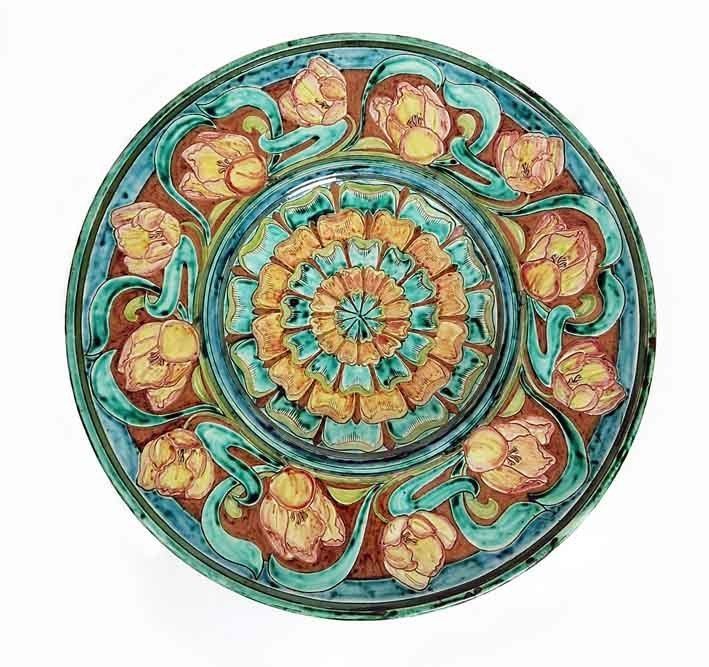 | ||
renaissance to regent street the della robbia pottery
The Della Robbia Pottery was a ceramic factory founded in 1894 in Birkenhead, England.
Contents
- renaissance to regent street the della robbia pottery
- Della robbia pottery by nicola jones
- Founders
- Products
- Later period
- References
Della robbia pottery by nicola jones
Founders

The business was started by Harold Steward Rathbone and Conrad Gustave d'Huc Dressler (1856-1940). Rathbone, son of a wealthy local business man, Philip Rathbone, had been a pupil of Ford Madox Brown, who was one of the founders of the Arts and Crafts movement. Dressler was a sculptor, potter and also inventor of the continuous firing tunnel kiln. Giovanni Carlo Valentino Manzoni also joined the pottery in early 1894, leaving to establish his own pottery, the Minerva Art Ware Manufacturers in Hanley in July 1895. Manzoni returned to the pottery in June 1898, staying until its closure in 1906.
Products

The pottery was established as a true Arts & Crafts pottery on the lines advocated by William Morris, using local labour and raw materials such as local red clay from Moreton, Wirral. The pottery had lustrous lead glazes and often used patterns of interweaving plants, typical of Art Nouveau, with heraldic and Islamic motifs.
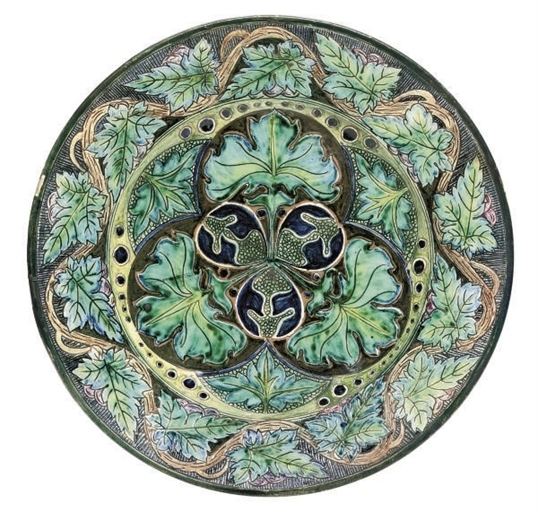
Dressler was mainly responsible for the decorative architectural panels, many of which can still be seen in the local area of Birkenhead and Liverpool, as well as in the local museums. The brightly coloured panels, inspired by the work of the Florentine sculptor Luca della Robbia and his family, did not prove to be very popular on the dark brick buildings of the period, the pottery turning to large two-handled vases, presentation wares, wall chargers and plates, as well as ceramic clock cases, tiled window boxes, numerous types of vases and similar wares, as a source of income. Dressler left the pottery in 1897 to establish his own pottery, the Medmenham Pottery, in Marlow, Buckinghamshire.
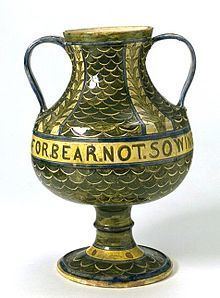
The Della Robbia mark is usually handwritten on the base of pieces with a ship device, and often the initials of the designer and decorator, and sometimes the date. Example initials include:
Later period
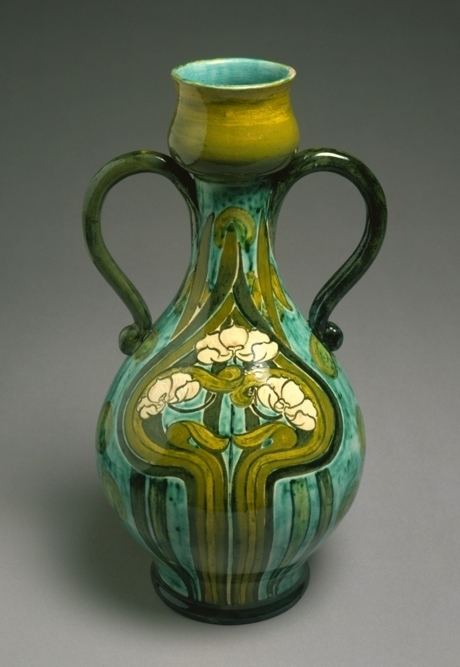
The costs of making the Della Robbia products was greater than the prices that could be charged. Even with the introduction of the professional services of a thrower and kiln man, as well as the use of commercial glazes and raw materials, the pottery could not make a commercial success of itself. In 1900 Marianne de Caluwé joined the pottery, injecting finance as well as bringing a new direction with her strong Art Nouveau influence. New exhibition venues in Scotland, even a renewed interest in the pottery's wares from 1900 through to 1904 could not help it survive, and so the pottery closed in 1906.
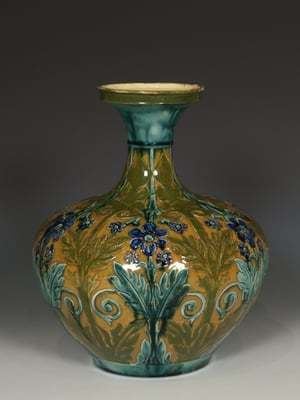
Della Robbia art pottery was widely sold by Liberty & Co. as well as in their own retail outlet in Liverpool. A large collection of Della Robbia pottery can be seen at the Williamson Art Gallery in Birkenhead. Some is also at Standen (near East Grinstead) owned by the National Trust.
